The rectangular cedar coffin (figure 1) once enclosed the mummy of the army commander and scribe Ipi-ha-Ishutef. Dating to ca. 2064 B.C., it was excavated near the pyramid of King Teti at Saqqara in Egypt, and later purchased by James Henry Breasted for the collections of ISAC in 1923.

Figure 1
Thanks to a generous grant from the American Research Center in Egypt (ARCE), conservators at ISAC were able to complete the treatment and study of this important example of funerary art from the First Intermediate Period.
Both the coffin box and lid are colorfully decorated with images and texts: food, goods, and blessings for the afterlife (figures 2 and 3). The presence of the Pyramid Texts on the interior surface of the lid, rather than the Coffin Texts more common for this time period, makes this object a bit unusual.
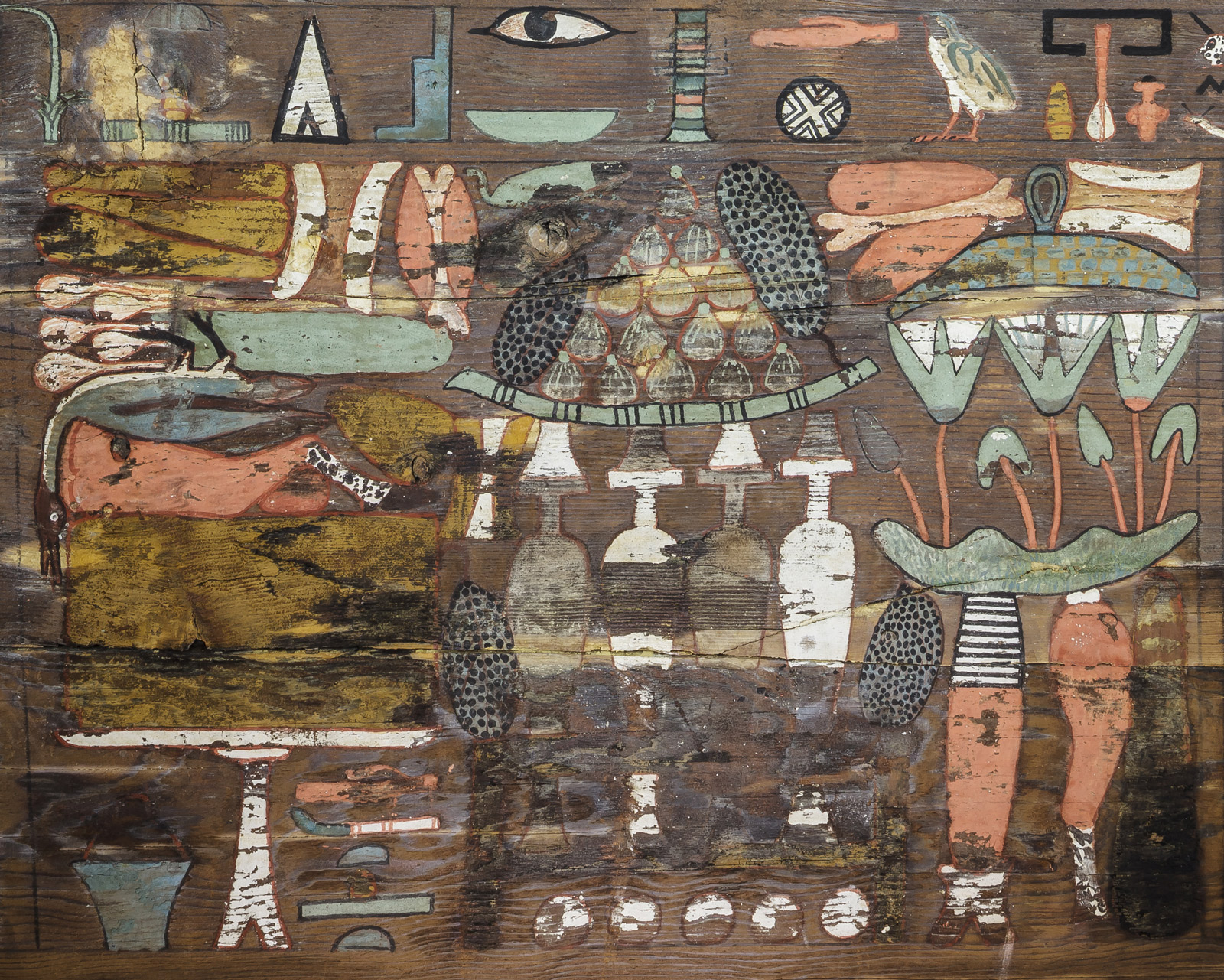
Figure 2
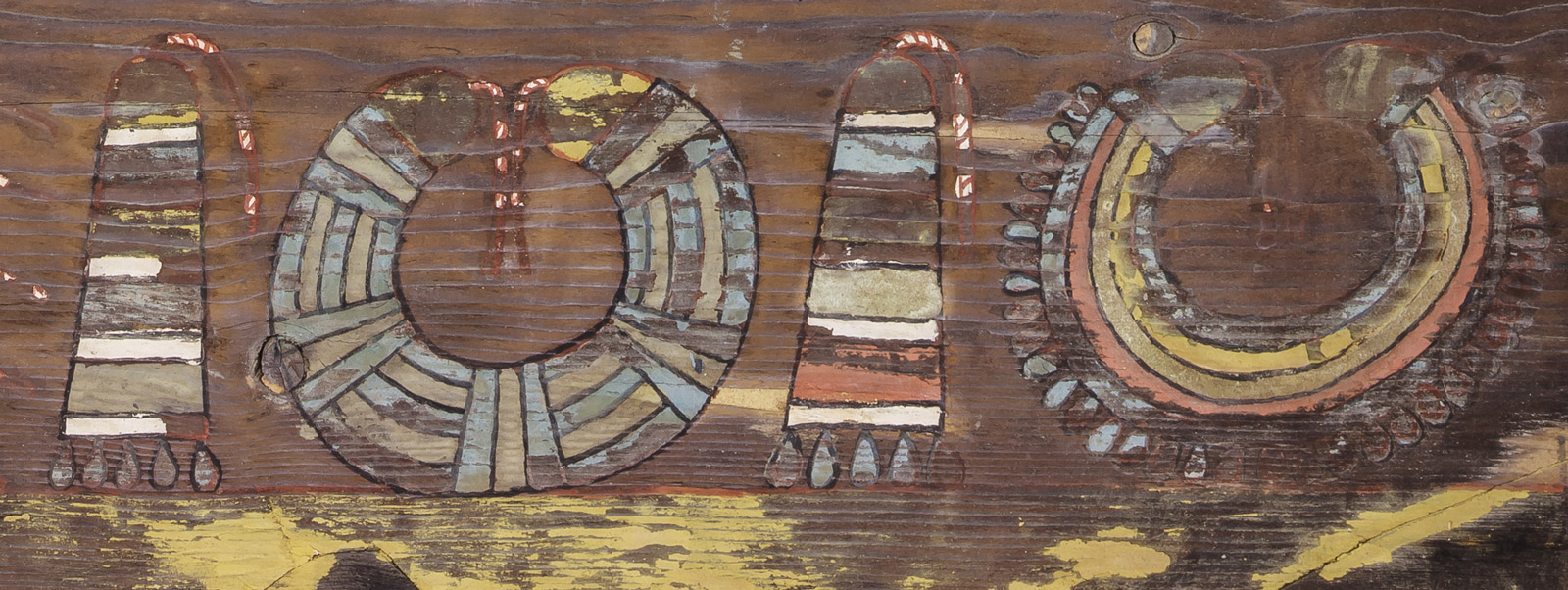
Figure 3
The conservation treatment of the coffin, which took place between September 2014 and August 2015, focused on stabilizing its fragile painted decoration. While today the coffin is kept in a strictly controlled environment, it has been subjected to variations in relative humidity over the course of its lifetime. Cyclic fluctuations of high and low relative humidity can lead to swelling and shrinking of wood which in turn can destabilize surface decorations. Indeed, portions of the painted decoration had separated from the wood surface of the coffin (see figure 4). Without stabilization, it was feared that these flakes of paint might detach completely.
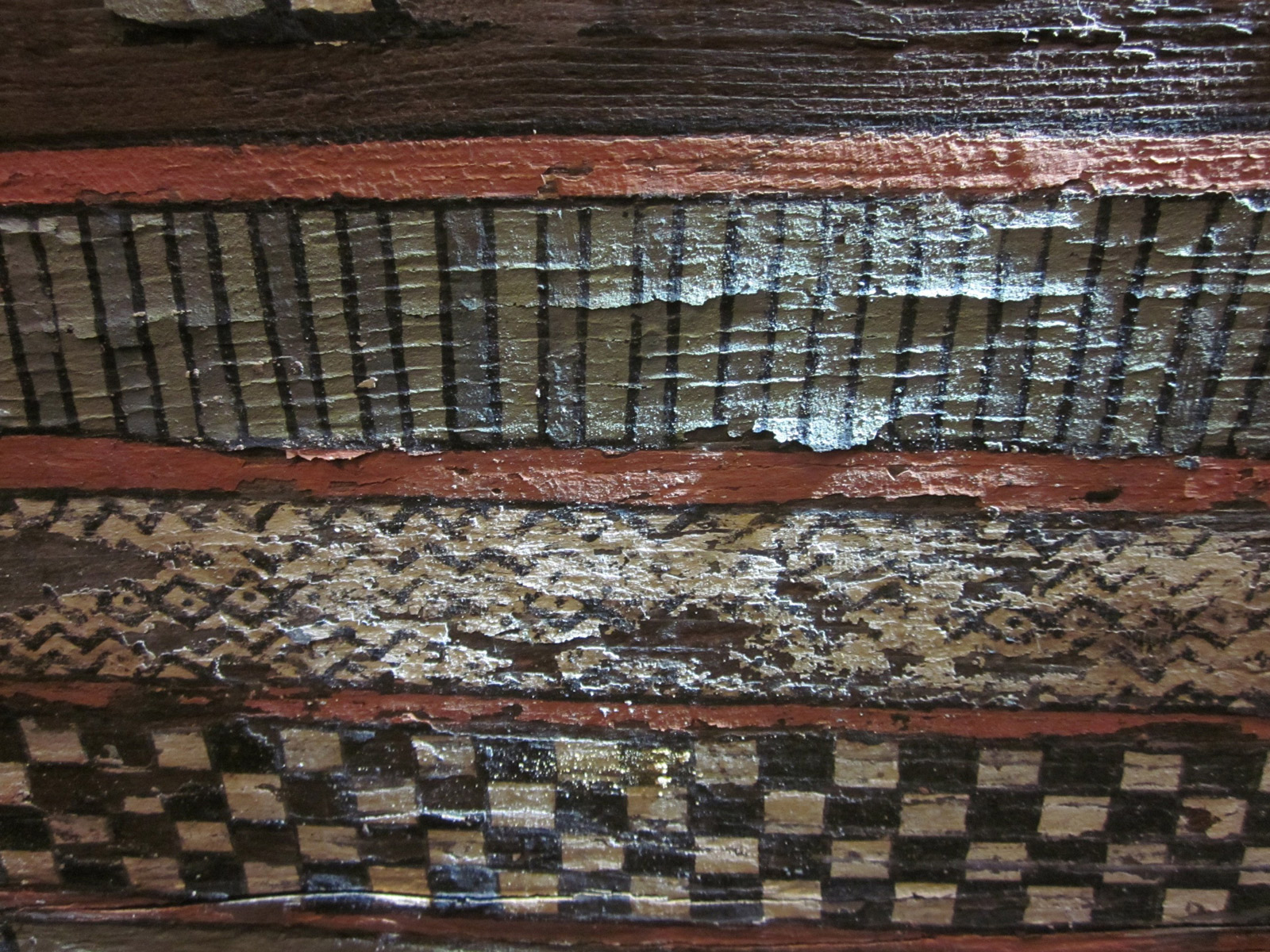
Figure 4
After a thorough examination to record both the condition of the coffin as well as details related to its manufacture, the conservation treatment began.
Prior to proceeding with the consolidation of the coffin decoration overall, several conservation-approved adhesives were tested, in a variety of concentrations and solvent combinations, for use in consolidating the flaking painted decoration on the coffin. It was essential to find an adhesive which could effectively re-adhere the detaching flakes of paint, but also not change the appearance of the decoration in any way, now or in the future. In order to test and evaluate the performance of the possible adhesives, a mock-up was created using a piece of modern scrap cedar wood, the same kind of wood used for the construction of the coffin (see figure 5). Though the wood of the coffin is obviously much older and has been through a lot more than the piece we chose for the mock-up, the conservators felt that using the same type of wood would contribute to a better overall evaluation of the consolidants.
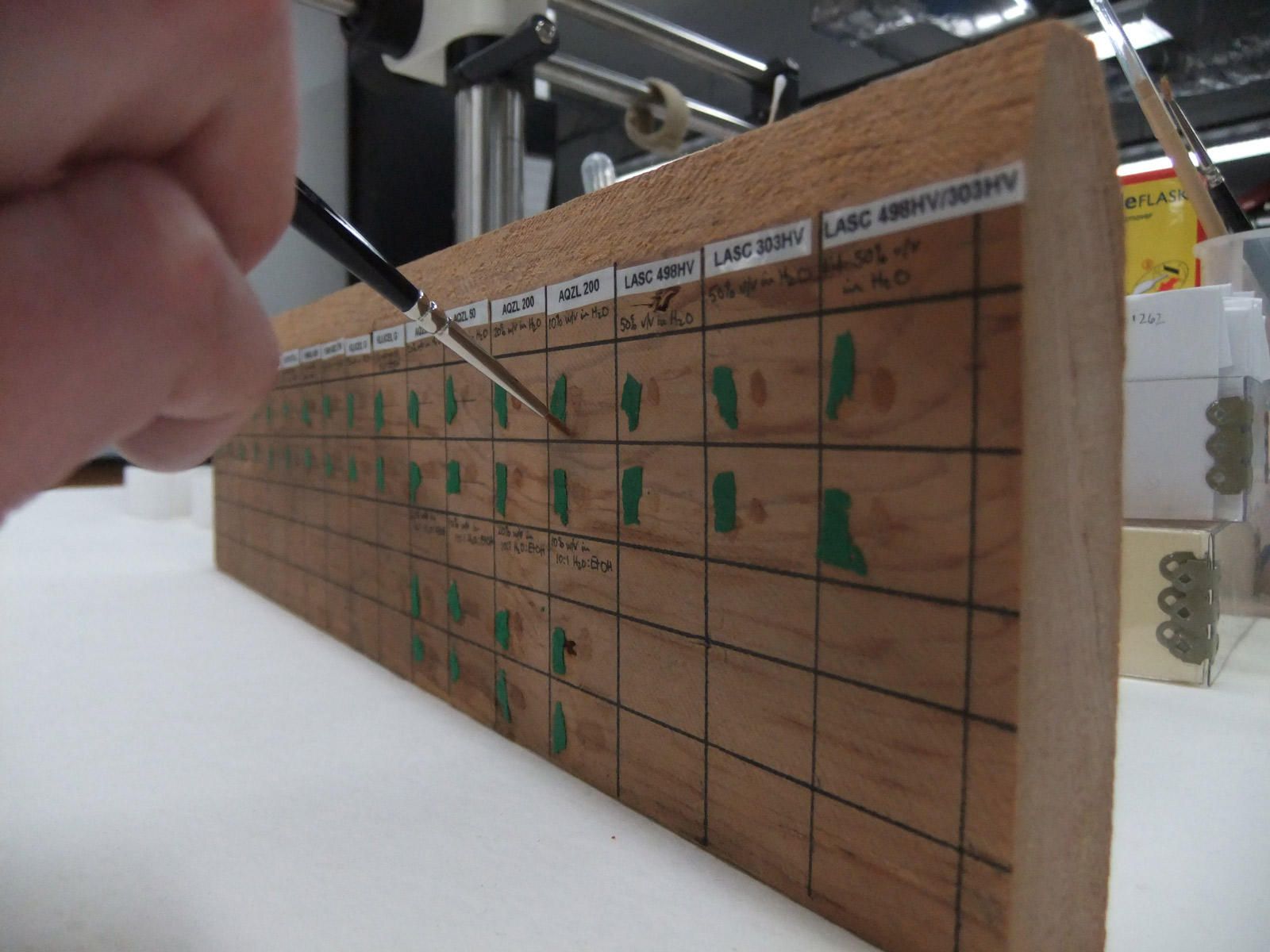
Figure 5
Each consolidant solution was evaluated for its ability to wick up into the flake, its effectiveness in adhering the flake to the wood, its viscosity, as well as for whether it caused any undesirable changes in appearance to the surface after drying, such as gloss, darkening, and/or tidelines. It should be noted that areas being consolidated exhibited a darkening and saturation when wet, but upon drying very little to no color change was noted (figure 6).

Figure 6
At the conclusion of the testing, the most effective and appropriate consolidant for stabilizing the coffin’s surface decoration was selected and the treatment of the painted decoration began (figure 7). The absence of the coffin box floor provided additional access to the interior decoration. A platform which can be lifted and lowered by means of a crank was custom-built in-house by Erik Lindahl, Head of Preparation and Exhibit Design at the OI (figure 8a). The platform’s open interior made it possible to reach the lower areas of the decorations by accessing the panels from below (figure 8b).

Figure 7
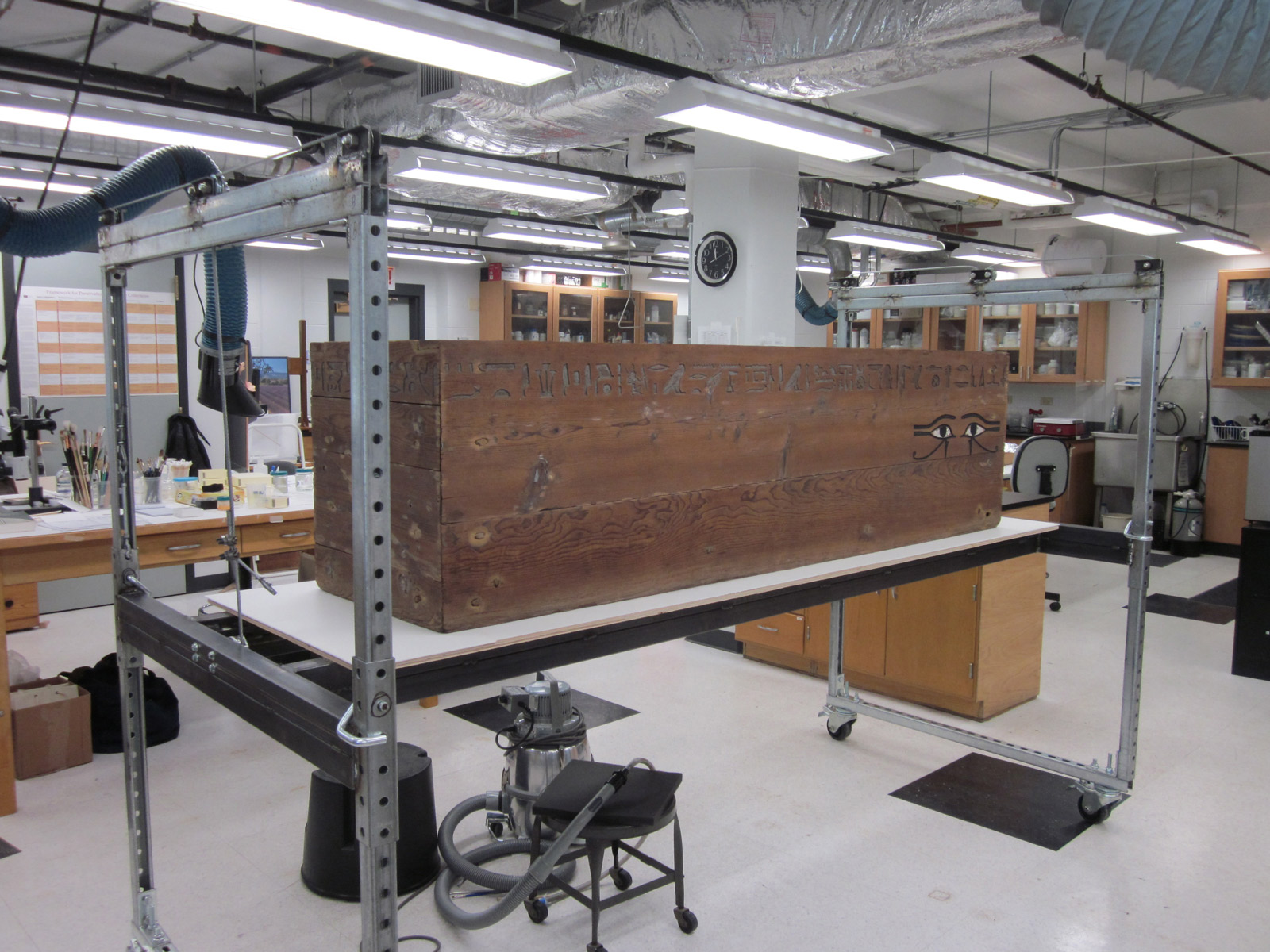
Figure 8a
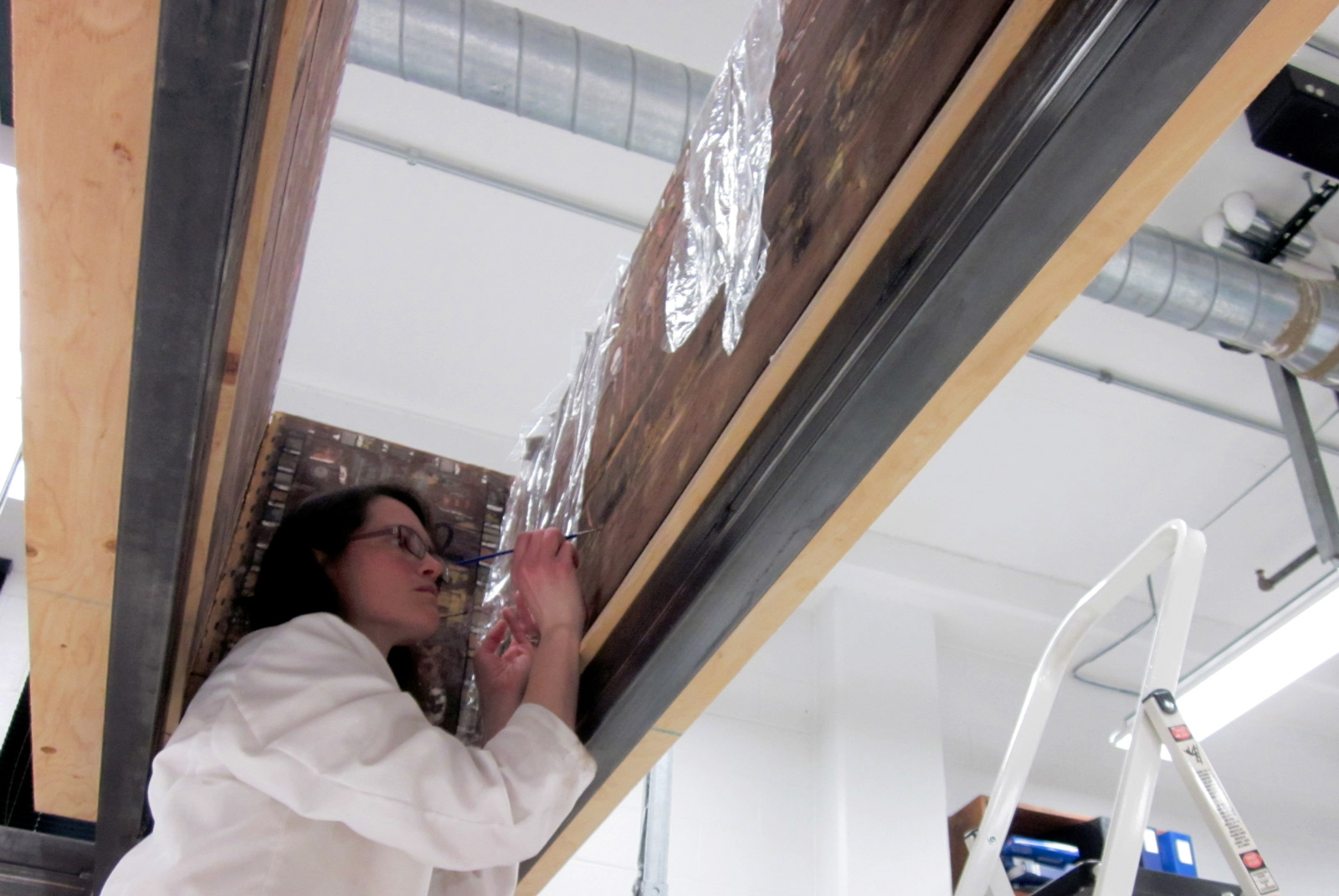
Figure 8b
Once the painted decoration had been stabilized, conservators approached the wood. The wood overall is in remarkably good condition. Even so, there were some areas that required stabilization. These were mostly small slivers of wood, attached but lifting out of plane, which were re-adhered in place.
With the painted decoration and wood fragments secured, the surface of the coffin was cleaned using a soft brush and a variable-speed HEPA filter vacuum, fitted with a small nozzle covered with cheesecloth, which would prevent any fragments from being pulled into the vacuum in the event they detached. It is important to note that only the bare wood was cleaned; no areas of painted decoration were vacuumed.
Characterization of the pigments used in the decoration was also an important part of this project. A wide variety of analytical techniques was used to determine the composition of the pigments. Dr. Gretchen Shearer of McCrone Associates carried out polarized light microscopy, Fourier Transform Infrared spectroscopy, and Raman spectroscopy. The conservation staff at ISAC performed handheld x-ray fluorescence analysis of painted areas of the coffin (figure 9). In addition, using equipment at Northwestern University's EPIC laboratories, they conducted scanning electron microscopy with energy dispersive spectroscopy of samples in support of Dr. Shearer’s work.
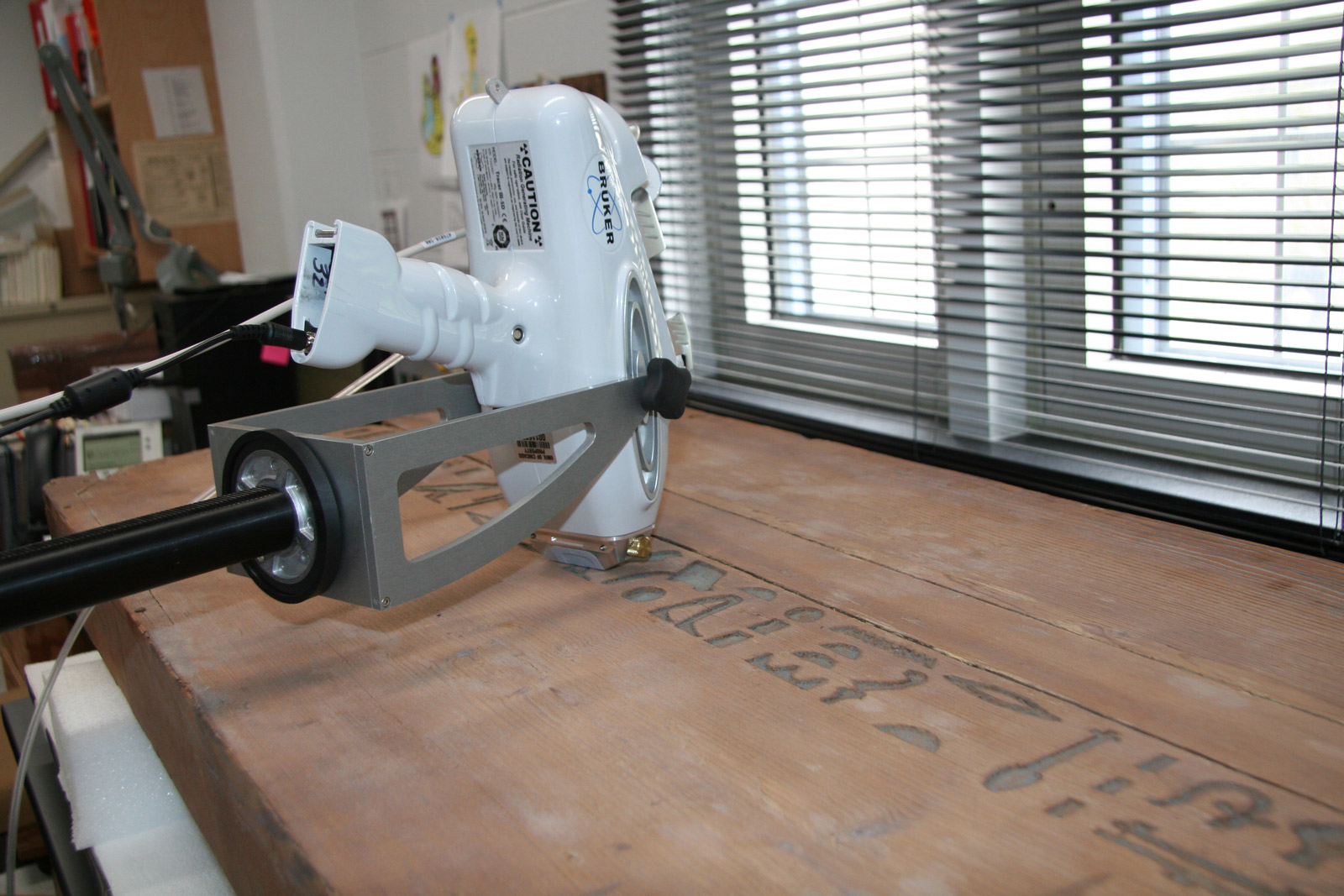
Figure 9
Where possible, flakes of paint which had already become detached in the past were used for the analyses. However, in order to be sure of proper identification of some of the pigments, it was necessary to remove microscopic samples directly from the extant decoration. This was done prior to consolidation so as to avoid any possible interference with the results.
The analysis results to date indicate that the pigments used on the coffin are consistent with ancient Egyptian materials. The white pigment contains calcium sulfate. The various shades of red and brown contain iron oxides. Egyptian blue, a copper calcium silicate, was identified in the blue and green pigment samples. It has not been possible to detect any binders in any of the samples to date.
In September 2015, the coffin and its lid were returned to the ISAC Museum Egyptian galleries, from which they had been absent for almost twenty years. It is located near our Predynastic pit burial and between the Third Intermediate Period mummy of Meresamun and the Ptolemaic mummy of Petosiris. We invite you all to visit this enhanced display of ancient Egyptian funerary practices!

